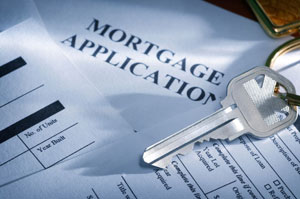Refinancing a Conventional Loan
By Liz Clinger Updated on 7/19/2017 There are several reasons why one would want to refinance from a government-backed loan into a conventional loan.
There are several reasons why one would want to refinance from a government-backed loan into a conventional loan.
Conventional Loan Requirements
- Credit: Generally, borrowers should have a credit score of at least 620 with a solid credit history to refinance, though higher credit scores will make available better interest rates.
- Equity: To refinance, borrowers need to own at least 10% of the equity on the property.
- Debt-to-Income (DTI): Borrowers must have a debt-to-income ratio of 45% or less to refinance a conventional loan.
- Documentation: To refinance a conforming loan, borrowers must present accurate documentation of employment history, income, and assets.
- Total Debt: If you have accumulated a significant amount of debt, you may have difficulty qualifying for a conventional loan refinance. Review your credit report to confirm the monthly payments shown are accurate.
Obtaining a Conventional Refinance
- Determine your refinance goals. When performing a conventional loan refinance, borrowers should consider what they would like to accomplish through the transaction. For instance, borrowers may refinance out of an adjustable-rate mortgage into a 30-year fixed-rate mortgage for safe, stable monthly payments. Also, homeowners may choose a 15-year loan to reduce the overall loan term. Whatever your objective, knowing what you want to achieve will help tremendously.
- Contact your lender. Working with your current lender will be much simpler than attempting to find a new lender to acquire a refinance for your conventional loan. Also, staying with your previous lender will quicken the lending process notably, as your details about property details, title records, employment information, and mortgage history will still be on file. However, they tend to not offer the best rates due to already having your loan.
- Shop around. Before making any commitments, borrowers should take the time to compare lenders and rates to find the best possible refinance rate. Remember, with conventional loans being such a long term commitment, even fractional differences between interest rates can amount to thousands over a loan’s lifetime.
- Apply for a loan. Complete your mortgage application and provide any necessary information. To avoid delays, submit this information as soon as possible, and ask your lender for clarification on anything that you find confusing.
- Provide documentation. Borrowers will need to present the necessary documents to secure the refinancing rate for the conventional loan. This may include information regarding taxes, assets, debts, or employment, and these documents will be reviewed to determine whether or not a borrower qualifies.
- Close the transaction. To finalize the refinance, you must meet with your settlement officer to sign the completed loan documents. The balance of your existing mortgage will be recorded on the HUD-1 Settlement Form, which will show that the balance has been repaid.
Refinancing from Conventional to FHA
Borrowers with conventional loans have the option of refinancing into a mortgage insured by the Federal Housing Administration (FHA); however, before choosing a refinance program, borrowers should carefully consider their reasons for refinancing.
Typically, refinance transactions are done to reduce interest rates, to cash out any available home equity, or to shorten the length of the mortgage term. Fortunately, FHA mortgages provide provisions making each of these goals reachable. One function of refinancing could be to acquire funds by cashing out a portion of the home’s equity.
FHA will allow for an 85% cash-out refinance without the inclusion of additional penalties. In addition, this refinance method allows lenders to manually underwrite the loan, giving borrowers more flexibility. For those with poor credit, borrowers may counterbalance this issue with a higher income or larger assets, consequently avoiding added penalties to interest rates.
Furthermore, refinancing into an FHA loan provides additional security as the loan is insured by the federal government in the event of a default.
Refinancing from FHA to Conventional
To determine whether refinancing is optimal, borrowers should make a rough estimate of their property value and owned equity. Borrowers who own less than 20 percent of the equity of their homes should consider waiting, as conventional loans require private mortgage insurance payments for those with more than 80% LTV.
However, borrowers with no choice but refinancing may still consider refinancing into a conventional mortgage, as FHA mortgage insurance requires a minimum of five years, while conventional mortgage insurance can be eliminated after only two years of on-time payments and a loan-to-value ratio of less than or equal to 78%.
Borrowers with homes that have decreased in value should consider an FHA Streamline Refinance rather than refinancing to a conventional mortgage.
FHA vs. Conventional Refinance
To determine which refinance best fits your financial needs, you will need to evaluate the costs of the refinance against the potential benefits. Discuss your situation with a lender and find out the time it will take before the refinance pays for itself. Also, homeowners should consider how much longer they will remain in the home; if the owners choose to move before the refinance repays itself, they will have taken a loss on the refinance.
Furthermore, borrowers should assess the economic climate to estimate the future of home prices and mortgage rates. Due to FHA loans being assumable, borrowers who sell their homes may find an FHA refinance to be advantageous and more attractive to prospective buyers if mortgage rates increase.
Conventional Refinancing through HARP 2.0
Another refinance option available to some conventional loan borrowers is the Home Affordable Refinance Program (HARP). The current version, HARP 2.0, provides a helpful refinance option to underwater borrowers who were most affected by the housing market crisis of the late 2000’s, assisting those who would not otherwise be able to refinance as a result of declining U.S. home prices.
HARP 2.0 Benefits for Conventional Loans
With the improvements of the second version, HARP has much to offer underwater borrowers. Most impressively, HARP 2.0 allows borrowers to refinance regardless of LTV ratios on their property. In other words, borrowers with an LTV ratio of 125% or more may still qualify to refinance and secure lower interest rates, though the initial loan exceeds the current property value by 25% or potentially more.
For more information on HARP 2.0, visit Lender411's in-depth article on HARP 2.0 Eligibility & Qualifications.

Didn't find the answer you wanted? Ask one of your own.
-
 Credit Score Requirements for Conventional Loans
View More
Credit Score Requirements for Conventional Loans
View More
-
 What is a Conventional Loan?
View More
What is a Conventional Loan?
View More
-
 Conventional Versus FHA Loans
View More
Conventional Versus FHA Loans
View More
-
 Alternatives To a Standard Mortgage
View More
Alternatives To a Standard Mortgage
View More
-
 Making a Mortgage Decision: Conventional, FHA and VA Home Loans
View More
Making a Mortgage Decision: Conventional, FHA and VA Home Loans
View More
-
 Five Year Fixed Rate Mortgages Explained
View More
Five Year Fixed Rate Mortgages Explained
View More

Contributing Authors
Get a Free Quote! Get a Conventional Loan!
Related Articles
Ask our community a question.
Searching Today's Rates...

Featured Lenders
Cameron Burke
Vision One Mortgage
Huntington Beach, CA
Kat Whitman
Whitman Met, Inc.
Sacramento, CA
Lisa Stepp
RBS Citizens
Clifton Park, NY


